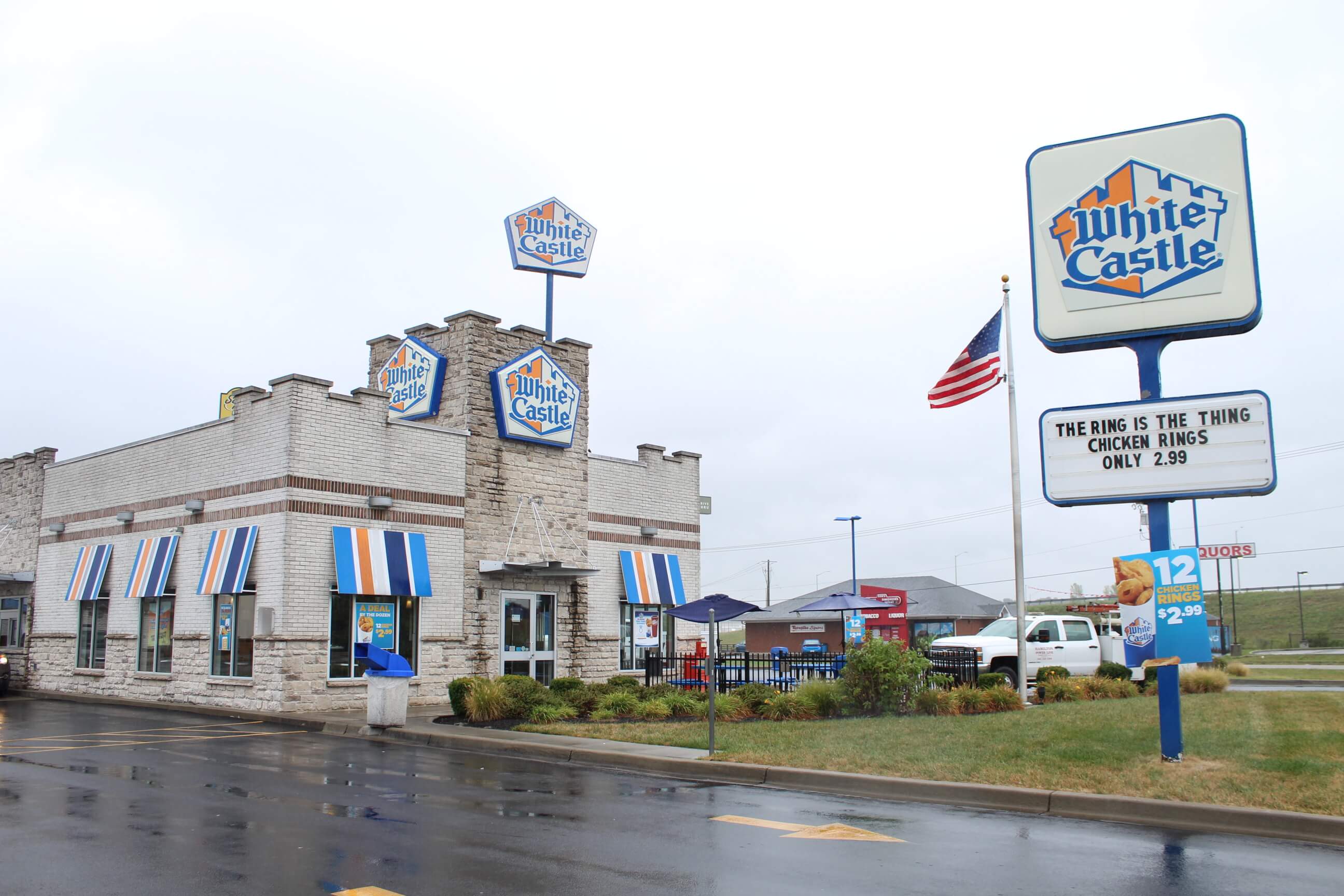A Smarter Restaurant: 5 Learnings from Chick-fil-A’s Approach to Restaurant Monitoring and Management
How Chick-fil-A thinks about and develops technology to manage their quick service restaurants (QSRs). An overview of their approach to remote device management.

Since its founding in 1967, Chick-fil-A has popularized the fried chicken sandwich and become the top ranked fast food restaurant for customer satisfaction.
The “Eat Mor Chikin” franchise is also famous for being closed on Sundays. Despite a shortened workweek, Chick-fil-A claims to do more sales in six days than any other quick service restaurant (“QSR”) does in seven. Proof? With more than 3,000 franchise restaurants across the United States, the company did more than $21B in sales as of 2023 and is still growing.
Every Chick-fil-A restaurant is a feat of customer service and food production, with many restaurants doing more than three times the volume they were initially designed for.
The secret ingredient to how Chick-fil-A accomplishes more with less, growing along the way?
Technology.
Chick-fil-A makes their restaurants smart.
Point-of-sale (POS) Systems and QSR Kitchen Technology
Making a QSR like Chick-fil-A smart requires integrating many disparate technologies. These devices must work together, integrate where possible, stay up to date, and coordinate activities. Here are a couple connected product categories involved in the QSR space:
- Order-taking point-of-sale (POS) devices — Cash registers, mobile ordering devices in the drive-through (e.g. tablets), back of house POS, mobile apps of customers, etc.
- Kitchen technology — Either a part of the POS system or an extension of it, kitchen display screens and menu management systems. Also, ovens, fryers, and other cooking equipment.
Chick-fil-A spent years developing a technological solution to manage the technology behind their restaurants.
Led by Chief Architect Brian Chambers (who has been with Chick-fil-A for 20 years), Chick-fil-A’s Enterprise Architecture practice developed their edge computing solution using Kubernetes. The team chose Kubernetes because they sought to build containerized applications that could interact with Internet-of-Things (IoT) devices and other data sources within the restaurant.Kubernetes offered flexibility and an open-source ecosystem, giving the team confidence they could build a POS system that would evolve with their needs.
The version of Kubernetes they use — called K3s — was built to run on Intel NUCs. Seen below, these compact computers are roughly the size of a Chick-fil-A sandwich (also seen below).

Since its development over five years ago, the Kubernetes system has been deployed chain-wide and run in production. As Chambers put it in January 2023, “In total, there are tens-of-thousands of devices deployed across our restaurants that are actively providing telemetry data from a wide variety of smart equipment devices (fryers, grills, etc.).”
How exactly does the system work? If you want to go as deep as possible, bookmark the Chick-fil-A Tech blog at Medium. The blog is contributed to by many members of the technical team, including Chambers, and you’ll find dozens of articles there about how they faced and conquered edge computing challenges.
We combed through their blog (and other content) looking to learn more about their innovative work, and what follows below is a menu of items that help answer the question, what makes Chick-fil-A’s approach to edge computing so successful?
What Makes Chick-fil-A’s Approach to Edge Computing So Successful?
Whether their approach to creating local “clouds” for each restaurant — or upcycling support requests to fill their new development pipeline — here’s a 5-count nugget of edge computing insights for you:
1. Prove you can do it by starting small
Chick-fil-A’s innovation began when they identified IoT support as the next big way to improve restaurant capacity and adapt to changing customer expectations regarding digital experiences. The restaurant chain would have to use connected products to deliver service fast while maintaining or exceeding the brand’s high quality standards.
First, the team needed to prove building a bespoke restaurant management system would deliver the expected service improvements before it was bankrolled across the restaurant empire.
To prove their worth, the Chick-fil-A edge computing team worked to build momentum — and trust. They started small, using a prototype. Learning quickly, they refined their approach to overcome the unique constraints of an in-restaurant system. For example, they had to overcome limitations to physical space and available power outlets.
Iteration and incremental success kept the team focused on achieving business priorities, helping them avoid the trap of innovating for innovation’s sake. Though it took time and sustained effort to build it, their restaurant management system delivers on Chick-fil-A’s reputation for stellar customer service.
2. Consistency leads to predictability
Chick-fil-A built a POS system using the same unique combination of hardware, software, and tools across its national restaurant footprint. In their article Enterprise Restaurant Compute, the Enterprise Architecture team shared how each on-site system is shipped and set up the same way, so rollout is easy to manage even with thousands of locations.
(Editorial note: A common use for automations in Canopy? Build automations to eliminate manual onboarding of new devices.)
To keep the system running predictably, remote access to Chick-fil-A’s Kubernetes clusters is limited, but developers can still receive logs and status updates on demand to support real-time troubleshooting without slowing down the system.
With parameters in place, updates can be made across the system quickly or, in some cases, proactively. This predictable and streamlined process keeps Chick-fil-A restaurants humming Monday through Saturday.
3. Data is an asset, so long as it’s properly managed
Managing remote devices requires monitoring data from those devices.
In the case of Chick-fil-A restaurants, every remote device would send data to the same system. In earlier iterations, the volume of data sent to that system consumed all available bandwidth. They were shipping back loads of unnecessary logs.
Sudden bandwidth constraints slowed down credit card processing and got in the way of doing business.
Chick-fil-A solved this problem by thinking more about their metrics, eventually putting them into three categories:
- System metrics — Overall system health and performance metrics like memory utilization, CPI and network bandwidth usage.
- Application metrics — App performance metrics like active users, transactions per second, error rates, and response times.
- Business metrics — Measurements explaining how technical performance relates to business outcomes like revenue per user and conversion rates.
Organizing data this way turns data into actionable, business-relevant insights. Like the Chick-fil-A team, we help customers organize their data into connected product KPIs (Key Performance Indicators). More on KPIs here.
With better metrics, Chick-fil-A can avoid direct logging metrics to the cloud, sending only the data that matters and preserving bandwidth.
4. Create a continuous feedback loop
The Chick-fil-A team developed a multi-tiered, continuous feedback loop in order to manage support issues and prioritize new projects. Here’s how it works.
The First Tier Support team addresses simple issues and applies and documents solutions. When an issue is too complex for First Tier Support, it is forward to the Support DevOps team, a more technically skilled group, for resolution.
The two support teams report their findings and issues each week, providing inspiration for new development efforts. This feedback from support teams is used to prioritize the development of new tools and capabilities.
As Chambers puts it, "Our goal is to automate where it is practical, and push the remaining support work as high in the support chain as possible. This frees up our technical staff to continue to innovate and improve the platform."
The Chick-fil-A team created a feedback loop between their First Tier Support and Support DevOps teams. As you would expect, issues originate within the First Tier Support and escalate to the Support DevOps team when necessary. These teams collaborate to resolve issues and then document solutions for future resolution. They run retrospectives, learning along the way, and the Support DevOps team has a line into the New Development Team, helping that team think through what might be improved about their system. Chambers says, "This support model has been very successful. The First Tier Support team is able to resolve the vast majority of alerts that arise — often before any issue is even detected in a restaurant."
(Solving remote device problems before they're noticed is something we hear from Canopy customers too.)
TL;DR: Chick-fil-A's team structure is smart and getting smarter all the time.

Today, remote monitoring and management can proactively identify and resolve issues to keep restaurant technology running, and remote monitoring with automation can even stand in for level 1 support, reducing staffing needs.
Get Fast-Food Friction
Access the 2025 Restaurant Tech Report instantly to find out what quick-service restaurant goers want (and where brands fall short).

Get Fast-Food Friction
Access the 2025 Restaurant Tech Report instantly to find out what quick-service restaurant goers want (and where brands fall short).

Get Fast-Food Friction
Access the 2025 Restaurant Tech Report instantly to find out what quick-service restaurant goers want (and where brands fall short).
5. Consider when to build and when to buy
The industry has come a long way since Chick-fil-A had to build its own bespoke systems to participate in the Internet of Things. Still their core principle, “Buy when possible, build when necessary,” remains and represents an important lesson in restaurant technology. Here’s how the principle works: Chick-fil-A puts its own technology needs ahead of an easy solution by evaluating out-of-the-box products with a builder’s mindset. If existing options do not meet their needs, Chick-fil-A is confident that it can build and manage its own solution. Still, best-in-class SaaS products are always preferred to provide a faster, expert option.When it’s time to decide whether to build or buy, consider organizational resources beyond the initial build. Remember that successful systems need maintenance and will evolve over time. Dedicated solution providers offer specialized products and support alongside the promise of future improvements.
Here's a resource for how to think through the decision to build or buy remote monitoring and management from Canopy co-founder Webb Morris.
Managing Restaurant Technology at the Edge
If you manage a national-level restaurant that depends on POS systems and other kitchen technology, you know the necessity of remote monitoring and management. Remote device management helps maximize the return on expensive technology assets while avoiding unnecessary maintenance and support costs. This all results in greater margin, while protecting and even growing revenue across the restaurant footprint.
Chick-fil-A was an early adopter of restaurant monitoring technology, launching its enterprise analytics group and modern data stack in 2017. When the restaurant chain first identified a need for IoT support, there were not many plug-and-play solutions to help them along. The CFA edge compute team thought hard about the question of “buy vs. build” (as in no. 5 above) and then set about developing remarkable technology to manage all their endpoint devices at the edge.
The years of work shows — Chick-fil-A restaurants are leaders in the QSR space. Kudos to the team!
At Canopy, we’re inspired by Chick-fil-A because we know how important — and hard — monitoring and managing connected products is, whether it’s kiosks or kitchen displays, IoT or cash registers. Our platform is designed to adapt, built to connect and control any remote device, and ready to integrate into existing enterprise systems.
And though not quite the same as what Chick-fil-A has built, there’s plenty of common ground.
If you’d like to discuss how to automate remote device management for your connected products, reach out to us. Not ready to talk? Learn more about Canopy’s remote device monitoring, management, and automation capabilities.
For more on technology in the QSR space, read on about Domino's Pizza and the Pulse POS.



.jpeg)

